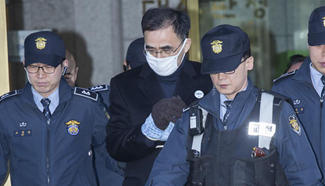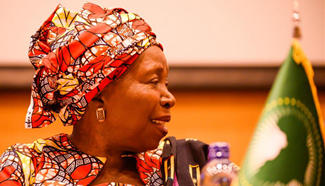BEIJING, Jan. 23 (Xinhua) -- Following the end of the one-child policy, allowing all couples to have two children, China is keen to encourage more parents to have two children.
According to a document released by the National Health and Family Planning Commission (NHFPC) Sunday, 18.46 million babies were born in Chinese hospitals last year, the highest since 2000 and 1.31 million more than 2015.
In the first year since the end of the one-child policy, more than 45 percent of newborns were not the first child.
This is a 10 percent increase from 2013, when an easing of the policy allowed couples to have a second child if either parent was an only child.
However, as far as Huang Wenzheng, a demographer, is concerned, the rise in the newborns after China's shift to the two-child policy was not satisfactory. "People's interest in expanding their family has waned."
According to a survey by the NHFPC, the majority of families expressed no desire to have a second child due to financial and childcare concerns.
The survey showed that spending on children, accounts for nearly a half of the average total income of a Chinese household.
Only four percent of babies under three in China were born in specialized institutions, compared with 50 percent in developed countries, the survey noted, adding that rising housing price and employment discrimination against women due to maternity leave were also influential.
To increase the fertility rate in China, the government should rolled out supporting measures to ensure that people can afford to raise more children, said Lu Jiehua, a sociologist with Peking University.
The central government has already made efforts to better allocate public resources to address Chinese couples' concerns.
More than 40 departments are improving policies in fields including health care, education, social security and taxation, upgrading maternity and child medical services as well as child care services, and formulating polices securing jobs and maternity leave for women, according to Yang Wenzhuang from the NHFPC,
"It will take five to 10 years before the results yielded by the policies show, and that's why we lost no time in making and implementing the policies," said Yang.
Despite the fact that the number of women of childbearing age is expected to fall by five million every year from 2016 to 2020, the health authority estimates that the newborn population during the period will range between 17 million to 20 million.
Facing an upcoming second-child boom, Yuan Xin, a professor on demography with Tianjin's Nankai University, called for operable measures to improve services, such as setting up breastfeeding rooms at public places.
Other suggestions included more resources being allocated to regions with greater need.
According to the NHFPC, Guangdong, Shandong, Henan and Hebei provinces with large populations, saw the most newborns. A total of 6.23 million new babies were born in the four provinces, accounting for nearly 34 percent of the country's whole newborn population.
To support the two-child policy, China has promised to provide 89,000 more maternity beds as well as 140,000 more obstetricians and midwives by 2020. More emergency centers for maternal and pediatric treatment will be set up nationwide by the end of this year.











